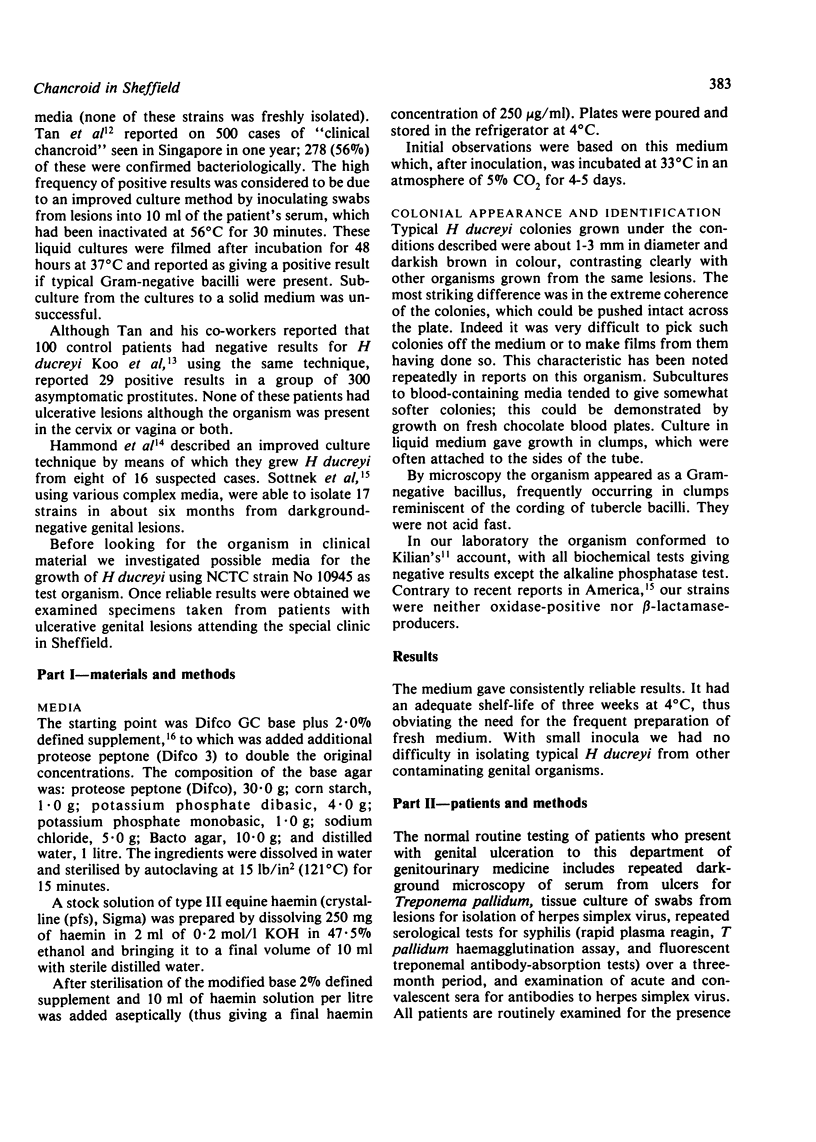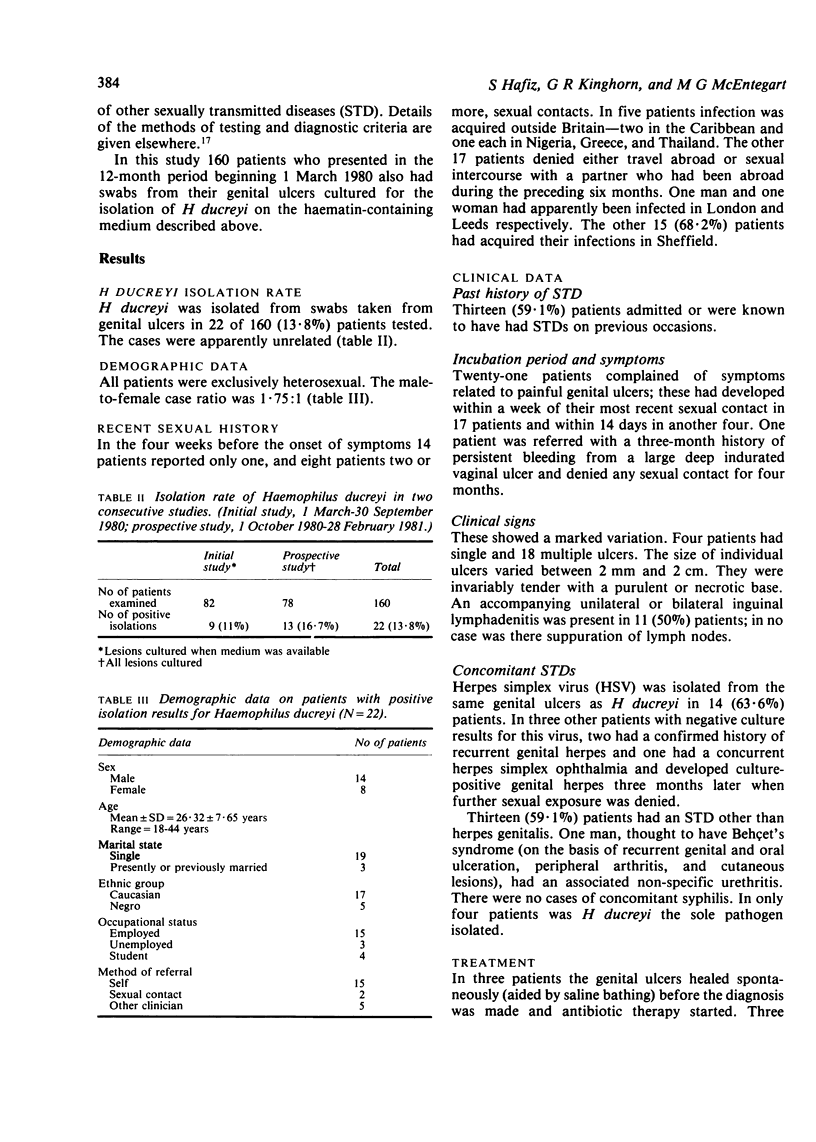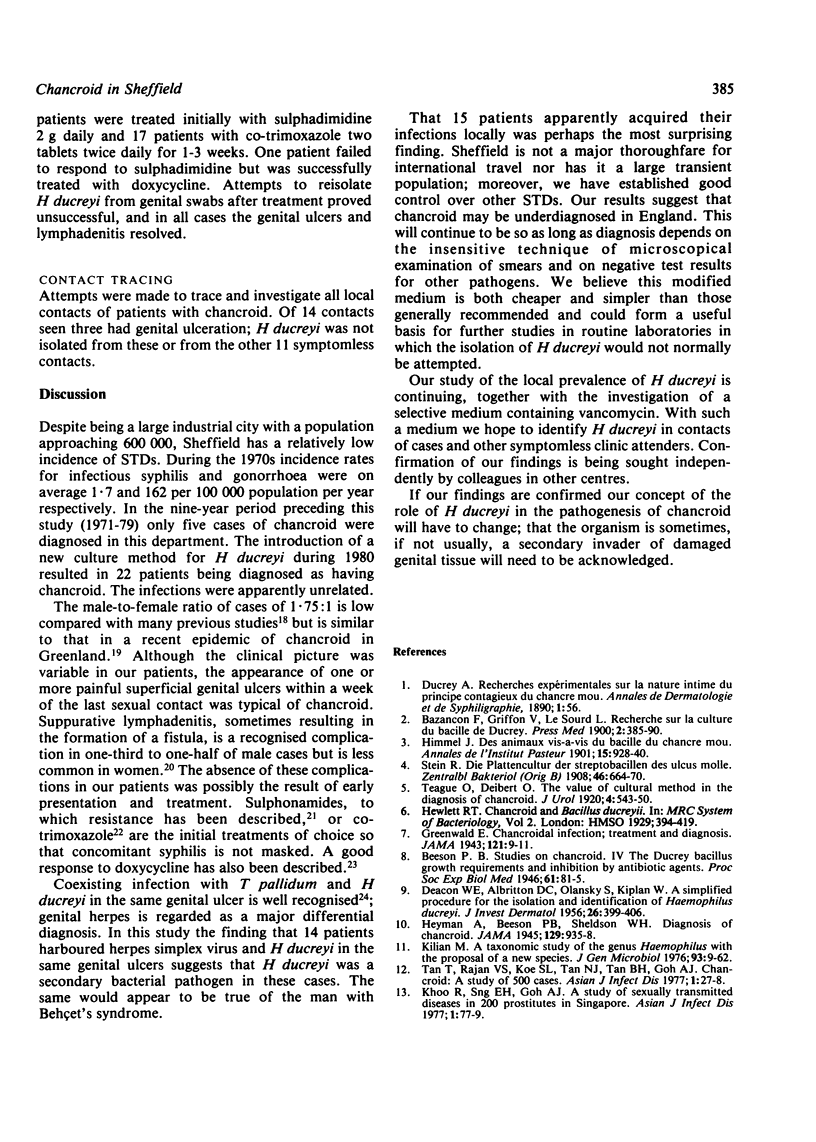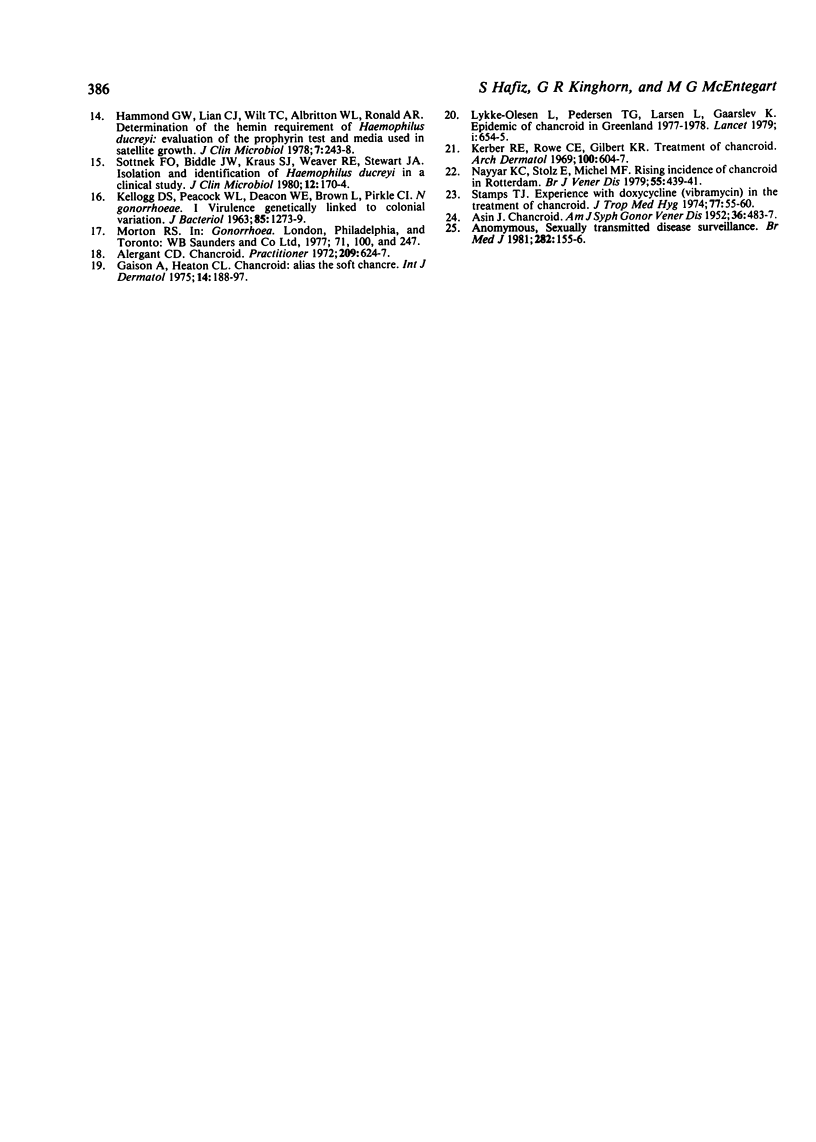Abstract
The causative organism of chancroid, Haemophilus ducreyi, is generally considered to be very fastidious and its isolation, maintenance, and detailed study very demanding. In this study a modified medium was developed, which allowed the organism to be isolated more frequently than previously would have been expected. Twenty-two cases of chancroid were confirmed by the isolation of H ducreyi in 160 patients with genital ulceration examined over a one-year period. The cases were apparently unrelated, and in only five was there a history of recent sexual contact abroad. Concurrent infection with other sexually transmitted diseases was present in 18 (81.8%) patients, and in 14 (63.6%) both H ducreyi and herpes simplex virus were isolated form the same genital ulcers. Thus, these findings indicate that chancroid is underdiagnosed in England and that H ducreyi may frequently occur as a secondary invader of damaged genital skin and mucosa.
Full text
PDF




Selected References
These references are in PubMed. This may not be the complete list of references from this article.
- ASIN J. Chancroid; a report of 1,402 cases. Am J Syph Gonorrhea Vener Dis. 1952 Sep;36(5):483–487. [PubMed] [Google Scholar]
- Alergant C. D. Chancroid. Practitioner. 1972 Nov;209(253):624–627. [PubMed] [Google Scholar]
- DEACON W. E., ALBRITTON D. C., OLANSKY S., KAPLAN W. V.D.R.L. chancroid studies. I. A simple procedure for the isolation and identification of Hemophilus ducreyi. J Invest Dermatol. 1956 May;26(5):399–406. doi: 10.1038/jid.1956.51. [DOI] [PubMed] [Google Scholar]
- Gaisin A., Heaton C. L. Chancroid: alias the soft chancre. Int J Dermatol. 1975 Apr;14(3):188–197. doi: 10.1111/ijd.1975.14.3.188. [DOI] [PubMed] [Google Scholar]
- Hammond G. W., Lian C. J., Wilt J. C., Albritton W. L., Ronald A. R. Determination of the hemin requirement of Haemophilus ducreyi: evaluation of the porphyrin test and media used in the satellite growth test. J Clin Microbiol. 1978 Mar;7(3):243–246. doi: 10.1128/jcm.7.3.243-246.1978. [DOI] [PMC free article] [PubMed] [Google Scholar]
- Kerber R. E., Rowe C. E., Gilbert K. R. Treatment of chancroid. A comparison of tetracycline and sulfisoxazole. Arch Dermatol. 1969 Nov;100(5):604–607. [PubMed] [Google Scholar]
- Kilian M. A taxonomic study of the genus Haemophilus, with the proposal of a new species. J Gen Microbiol. 1976 Mar;93(1):9–62. doi: 10.1099/00221287-93-1-9. [DOI] [PubMed] [Google Scholar]
- Lykke-Olesen L., Larsen L., Pedersen T. G., Gaarslev K. Epidemic of chancroid in Greenland 1977-78. Lancet. 1979 Mar 24;1(8117):654–655. doi: 10.1016/s0140-6736(79)91091-2. [DOI] [PubMed] [Google Scholar]
- Nayyar K. C., Stolz E., Michel M. F. Rising incidence of chancroid in Rotterdam. Epidemiological, clinical, diagnostic, and therapeutic aspects. Br J Vener Dis. 1979 Dec;55(6):439–441. doi: 10.1136/sti.55.6.439. [DOI] [PMC free article] [PubMed] [Google Scholar]
- Sottnek F. O., Biddle J. W., Kraus S. J., Weaver R. E., Stewart J. A. Isolation and identification of Haemophilus ducreyi in a clinical study. J Clin Microbiol. 1980 Aug;12(2):170–174. doi: 10.1128/jcm.12.2.170-174.1980. [DOI] [PMC free article] [PubMed] [Google Scholar]
- Stamps T. J. Experience with doxycycline (Vibramycin) in the treatment of chancroid. J Trop Med Hyg. 1974 Mar;77(3):55–60. [PubMed] [Google Scholar]


